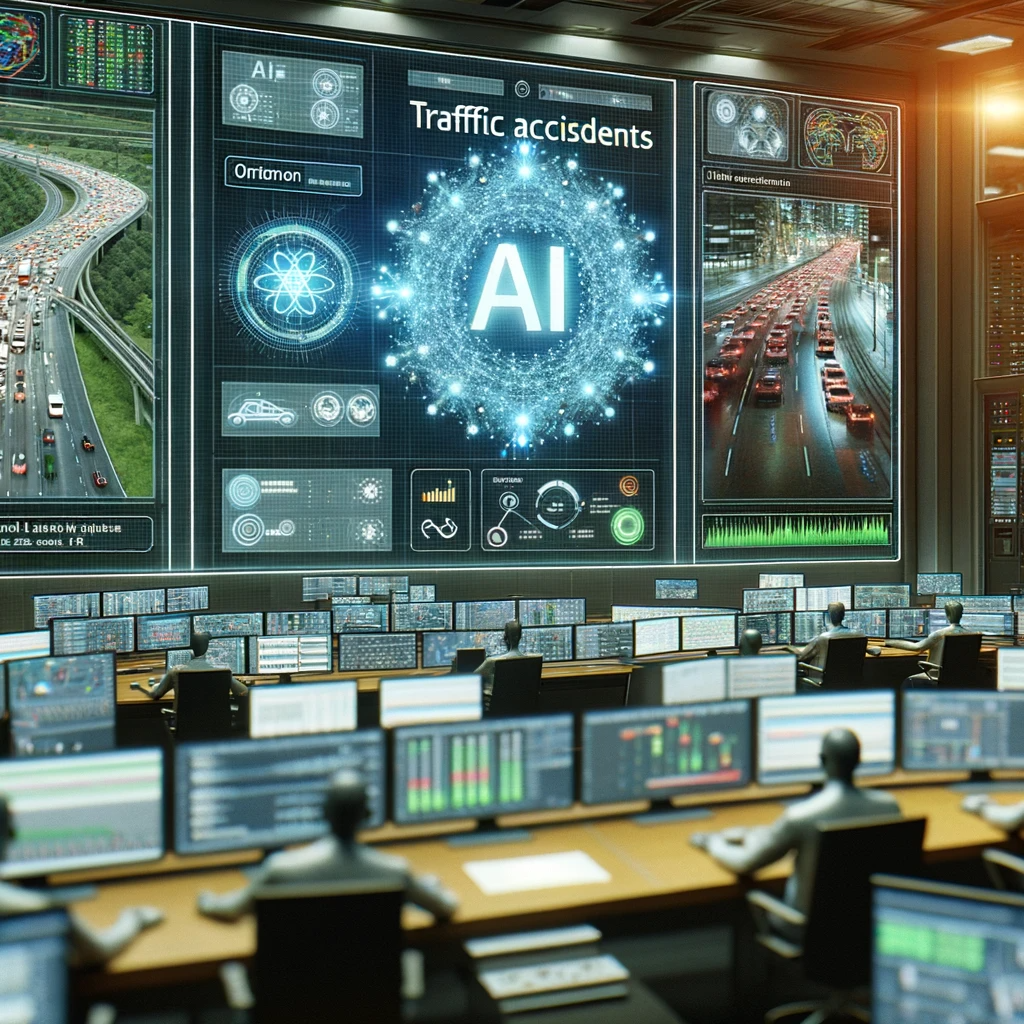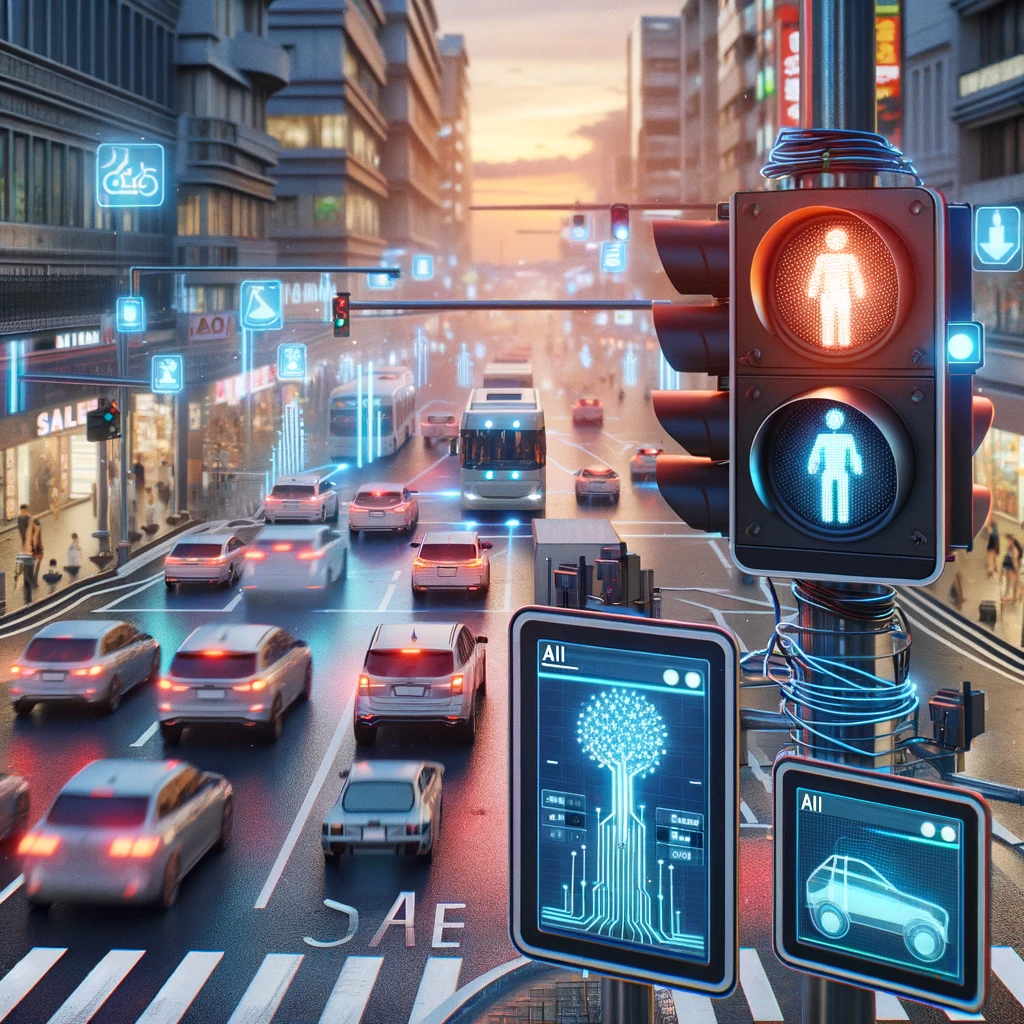The Road to Safer Travel with AI
Every year, millions of lives are affected by traffic accidents, a global challenge that transcends borders and impacts communities worldwide. These incidents not only lead to devastating loss of life but also result in significant economic and social costs. It is a pressing concern that calls for innovative solutions, and in the digital age, one technology stands at the forefront of this battle: Artificial Intelligence (AI).
Imagine a world where traffic accidents can be predicted and prevented in real-time, where the roads are safer, and the lives of commuters are protected. This is not a far-fetched dream but an evolving reality shaped by the relentless march of AI technology. In this article, we embark on a journey through the landscape of AI-driven traffic safety systems, exploring how they are revolutionizing the way we approach road safety.
Gone are the days when traffic safety relied solely on human vigilance and static road infrastructure. Today, AI is becoming an indispensable partner in monitoring traffic, analyzing data, and identifying potential accident hotspots. It holds the promise of not only saving lives but also reducing the financial burden of accidents and alleviating the stress of daily commuting.
In this article, we delve into the promise, potential, and challenges of AI in predicting and preventing traffic accidents in real-time. We will explore the cutting-edge technologies, data-driven approaches, and government initiatives that are reshaping the future of road safety. From predictive analytics to real-time alerts and the role of autonomous vehicles, this journey will illuminate how AI is transforming the way we travel.
As we embark on this exploration, we invite you to consider the immense impact AI can have on our daily lives, as well as the opportunities and responsibilities that come with harnessing its power for the greater good. The road ahead is promising, and together, we will discover how AI is paving the way for safer and smarter transportation systems.
AI-Powered Traffic Monitoring Systems
In the realm of traffic safety, the traditional reliance on human surveillance and manual data collection methods is being replaced by sophisticated AI-powered traffic monitoring systems. These systems leverage a combination of cameras, sensors, and IoT devices to collect real-time data from roadways, intersections, and highways. The data is then processed and analyzed by AI algorithms to detect patterns, anomalies, and potential accident risks.
One of the key advantages of AI-driven traffic monitoring systems is their ability to provide a comprehensive view of traffic conditions. Cameras installed at strategic locations capture visual data, while sensors and IoT devices collect information on vehicle speed, density, and road conditions. This rich dataset is continuously fed into AI algorithms, enabling the system to make sense of the complex traffic environment.
Predictive Analytics for Accident Prevention
At the heart of AI’s role in traffic safety lies predictive analytics. Machine learning algorithms analyze historical traffic data, weather conditions, and real-time information to forecast potential accidents. By identifying patterns and trends, AI can predict accident hotspots with remarkable accuracy.
Imagine a scenario where an AI system processes data from previous accidents, road construction activities, and weather forecasts to determine the likelihood of an accident occurring at a particular intersection during rush hour. Armed with this knowledge, traffic authorities can take proactive measures such as adjusting traffic signal timings, deploying additional law enforcement, or notifying drivers through real-time alerts.

Real-Time Alerts and Communication
One of the most compelling aspects of AI in traffic safety is its ability to generate real-time alerts and facilitate communication. AI systems can instantly detect abnormal traffic patterns, accidents, or hazardous road conditions and communicate this information to drivers, authorities, and emergency services. These alerts can be delivered through various channels, including mobile apps, in-car displays, and roadside signs.
For example, if an AI system detects a sudden slowdown in traffic due to an accident ahead, it can send alerts to drivers in the vicinity, advising them to slow down and take alternative routes. Simultaneously, it can notify traffic management centers and emergency responders, ensuring a rapid response to the incident.
Challenges and Limitations
While the potential of AI in traffic safety is immense, it is not without challenges and limitations. Data accuracy is a critical concern, as AI algorithms heavily rely on accurate and up-to-date information. Inaccurate data can lead to false positives, where accidents are predicted incorrectly, causing unnecessary disruptions.
Privacy concerns also come into play when collecting and processing data from vehicles and drivers. Striking the right balance between data collection for safety purposes and individual privacy rights is a complex issue that policymakers and technology developers must address.
Furthermore, the effectiveness of AI in accident prediction can be influenced by external factors such as sudden weather changes or unforeseen events. AI systems must continually adapt to evolving conditions and learn from new data to maintain their accuracy.
Despite these challenges, ongoing research and advancements in AI technology are steadily improving the reliability and effectiveness of AI-powered traffic safety systems. The journey to predict and prevent traffic accidents in real-time is well underway, and AI is paving the way for safer roads and more efficient transportation systems.
The Role of Autonomous Vehicles
In the realm of traffic safety, the emergence of autonomous vehicles (AVs) adds another layer of complexity and opportunity. AVs are equipped with advanced AI-driven features that enhance safety on the road. These features include adaptive cruise control, lane-keeping assistance, and collision avoidance systems.
For instance, an AV equipped with AI algorithms can detect a vehicle suddenly braking ahead and automatically apply the brakes to avoid a collision. These AI-driven safety features not only protect AV occupants but also contribute to overall road safety by reducing the frequency of accidents caused by human error.
Furthermore, the potential of fully autonomous vehicles, where AI takes complete control of driving, offers the promise of nearly accident-free roads. AI systems in autonomous vehicles can communicate with each other to anticipate traffic movements, optimize traffic flow, and minimize the risk of accidents.
As autonomous vehicles become more prevalent on the road, the synergy between AI-driven traffic safety systems and AVs holds the potential to revolutionize road safety by drastically reducing the number of accidents caused by human error.
Government Initiatives and Regulations
The integration of AI into traffic safety is not happening in isolation. Governments and regulatory bodies worldwide are actively promoting and overseeing the adoption of AI-driven solutions to enhance road safety. These initiatives range from funding research and development to establishing guidelines and regulations.
For instance, some governments incentivize the installation of AI-powered traffic monitoring systems in urban areas to reduce accidents and congestion. They may also provide funding for research projects that explore innovative AI-based solutions for traffic safety.
Regulations play a crucial role in ensuring the responsible use of AI in traffic safety. They can set standards for data collection, privacy protection, and the deployment of AI systems on roadways. Regulations also define the roles and responsibilities of various stakeholders, from AI developers to government agencies and law enforcement.
Successful case studies from regions that have embraced AI-driven traffic safety solutions can serve as models for other areas looking to enhance their road safety efforts. These initiatives and regulations underscore the growing recognition of AI as a transformative force in preventing accidents and saving lives on the road.
Future Trends and Innovations
The journey to predict and prevent traffic accidents in real-time is an evolving one, with several promising trends and innovations on the horizon. As technology continues to advance, here are some key areas to watch:
Predictive AI Algorithms: AI algorithms will become increasingly sophisticated, capable of analyzing vast datasets and identifying subtle patterns that lead to accidents. These algorithms will integrate with traffic management systems, providing real-time insights to reduce accident risks.
5G and Edge Computing: The rollout of 5G networks and the advent of edge computing will significantly enhance AI’s capabilities in traffic safety. Low latency communication and faster data processing will enable real-time decision-making, making accident prevention even more efficient.
AI-Integrated Traffic Lights: Smart traffic lights equipped with AI can optimize traffic flow, reduce congestion, and prevent accidents. These traffic lights will adapt to traffic conditions in real-time, prioritizing safety while minimizing delays.
Collaborative AI Ecosystem: AI systems in vehicles, traffic management centers, and roadside infrastructure will form a collaborative ecosystem. They will share data and insights seamlessly, ensuring a coordinated response to accidents and hazards.
AI-Driven Vehicle-to-Everything (V2X) Communication: V2X communication allows vehicles to exchange information with each other and with roadside infrastructure. AI will play a central role in processing and acting on this information, enabling safer and more efficient driving.

Conclusion: A Safer Road Ahead with AI
As we conclude our exploration of AI’s role in predicting and preventing traffic accidents in real-time, it becomes evident that the fusion of artificial intelligence and transportation is ushering in a new era of road safety. The potential to save lives, reduce accidents, and improve the efficiency of our transportation systems is within reach.
AI-driven traffic safety systems, predictive analytics, real-time alerts, and the emergence of autonomous vehicles are all contributing to this transformation. Government initiatives and regulations are paving the way for responsible and widespread adoption of AI technologies on our roads.
The road ahead may have its challenges, including data accuracy, privacy concerns, and the need for continuous adaptation to changing conditions. However, the promise of safer roads, reduced accidents, and more efficient traffic management is a goal worth pursuing.
As AI continues to evolve and become an integral part of our daily lives, its role in enhancing traffic safety will only grow. It is a journey that holds the potential to make our roadways safer, protect lives, and ensure that the act of traveling from one place to another is not marred by accidents and tragedies.
In embracing AI as a partner in our quest for safer roads, we embark on a collective effort to shape the future of transportation, where accidents become increasingly rare, and the road ahead is marked by safety, efficiency, and peace of mind for all.
